Interior design is the art and science of creating functional and beautiful spaces that reflect the personality and taste of the occupants. Interior design can be challenging and rewarding, but it also requires some knowledge and skills to achieve the best results. That’s why interior designers follow some rules and guidelines that help them create harmonious and balanced spaces.
What are interior design rules?
They are not strict laws or formulas, but rather general principles and tips that help interior designers make decisions and solve problems. Those rules can cover various aspects of interior design, such as color, lighting, furniture, accessories, layout and more. Interior design rules can also vary depending on the style, theme and purpose of the space.
They are not meant to limit creativity or individuality, but rather to enhance them. They can help interior designers avoid common mistakes and pitfalls, such as creating a space that is too cluttered, too dark, too boring or too chaotic. Interior design rules can also help interior designers achieve a cohesive and consistent look throughout the space.
What are the common interior design rules?
There are many interior design rules that interior designers use, but some of them are more common and universal than others. Here are some of the common design rules that you should know:
The Rule of Three
This rule states that things that come in groups of three are more visually appealing and memorable than things that come in other numbers. You can use this rule to arrange your furniture, accessories, artwork and more in groups of three or multiples of three. Utilizing this rule is incredibly user-friendly, and you can explore further about its key elements to prepare for a fresh home aesthetic.
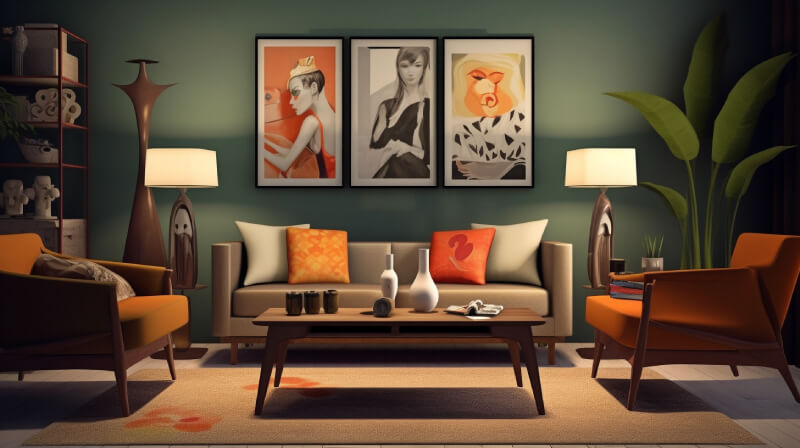 The Living Room Captivates and Enhances Memorability by Following the Rule of Three.
The Living Room Captivates and Enhances Memorability by Following the Rule of Three.
The 60-30-10 Rule
This rule states that you should use three colors in your space in the proportion of 60%, 30% and 10%. The 60% color should be your dominant color that covers most of your walls and large furniture pieces. The 30% color should be your secondary color that covers some of your smaller furniture pieces and accessories. The 10% color should be your accent color that adds some pops of interest and contrast to your space.
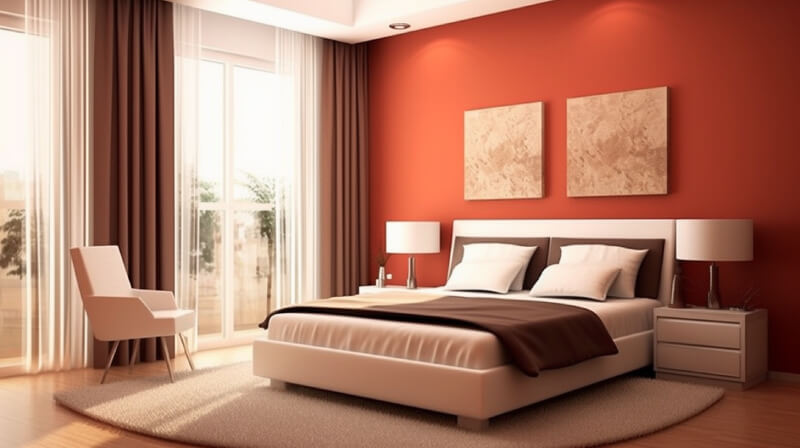 A Living Room Designed with the Common 60-30-10 Rule
A Living Room Designed with the Common 60-30-10 Rule
Discover more about the widely recognized 60-30-10 rule and explore various styles where homeowners can effectively implement it.
The 70-20-10 Rule
 The Living Room Adopts the 70-20-10 Rule, Creating a Vibrant and Dynamic Space.
The Living Room Adopts the 70-20-10 Rule, Creating a Vibrant and Dynamic Space.
The rule is a guideline that helps you create a colorful and lively space. It suggests that you should use three colors in your space in the proportion of 70%, 20% and 10%. The 70% color should be your neutral or background color that covers most of your walls and large furniture pieces. The 20% color should be your main or dominant color that covers some of your smaller furniture pieces and accessories. The 10% color should be your accent or pop color that adds some interest and contrast to your space.
So is it difficult and how to perfect the 70-20-10 rule? The answer is that the rule is very easy for homeowners to design a stunning home.
The 80-20 rule
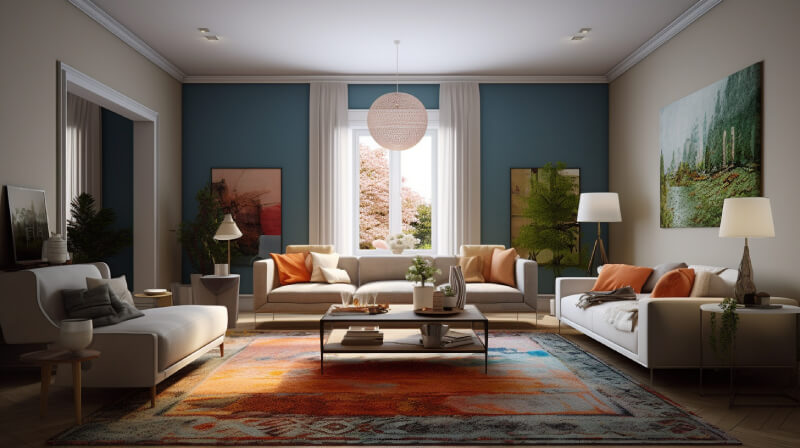 The Living Room Embodies the 80-20 Rule, Achieving a Harmonious and Balanced Space.
The Living Room Embodies the 80-20 Rule, Achieving a Harmonious and Balanced Space.
It is a guideline that helps you create a balanced and harmonious space. It suggests that you should choose one dominant style or color scheme for 80% of your room, and a contrasting or complementary style or color scheme for the remaining 20%. This way, you can achieve a cohesive look without being too boring or too chaotic. Furthermore, understanding the additional key elements of the 80-20 rule is crucial for transforming your home with remarkable styles.
Explore further about the four fundamental rules in Interior Design that simplify your work.
The 90-10 Rule
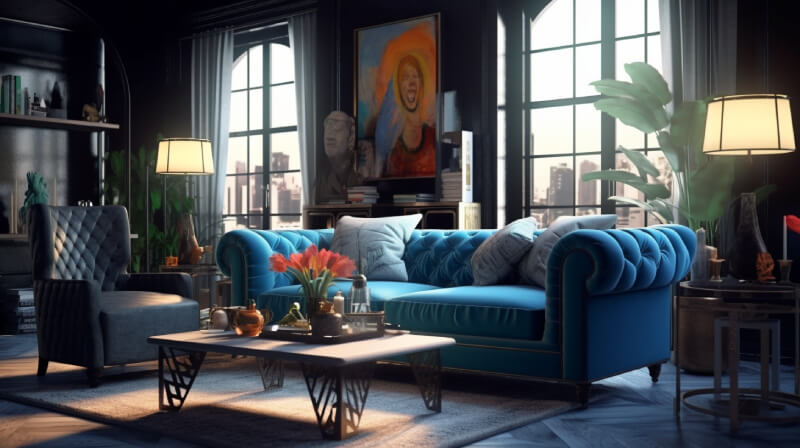 The living Space Exudes Boldness and Drama Through the 90-10 Rule.
The living Space Exudes Boldness and Drama Through the 90-10 Rule.
The rule is a guideline that helps you create a bold and dramatic space. It suggests that you should choose one dominant style or color scheme for 90% of your room, and a contrasting or complementary style or color scheme for the remaining 10%. This way, you can achieve a striking look without being too overwhelming or too bland.
Nevertheless, homeowners may find it challenging to successfully implement the rule without understanding its key principles. Fortunately, there are several essential elements that can assist you in organizing your living space and infusing it with uniqueness.
The Golden Ratio
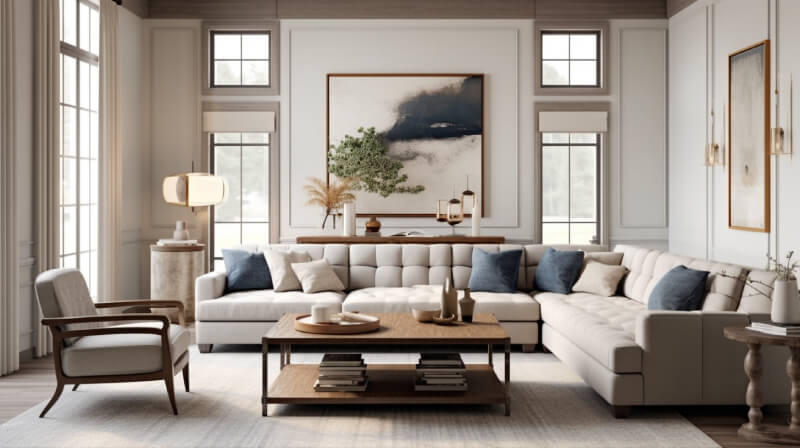 The Living Room Draws Inspiration From the Golden Ratio Rule, Evoking a Harmonious and Proportionate Ambiance.
The Living Room Draws Inspiration From the Golden Ratio Rule, Evoking a Harmonious and Proportionate Ambiance.
This rule states that you should use a ratio of 1.618:1 to create a sense of harmony and proportion in your space. You can use this ratio to measure the size and placement of your furniture, artwork, windows and more. For example, if you have a sofa that is 100 inches long, you can place a coffee table that is 61.8 inches long in front of it. Mastering the key elements of this rule will enable you to perfect your living space.
Ready to try some interior design rules in your space?
If you are looking for some inspiration and guidance on how to apply some interior design rules in your space, look no further than Hestya. Hestya is an online interior design service that offers high-quality custom products, affordable service and 3D scanning app for interior design.
Hestya helps you find your unique style by taking a set of fun and easy style quizzes that matches you with our expert designers. Hestya also helps you visualize your dream space by using our innovative app that scans your room in minutes and creates a realistic 3D model that you can customize with their products.
Hestya offers a wide range of products that suit any style and budget, from furniture and lighting to rugs and artwork. Hestya also offers free shipping and returns on all orders.
So what are you waiting for? Take the quiz now and discover how Hestya can help you transform your space with some interior design rules!